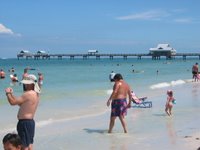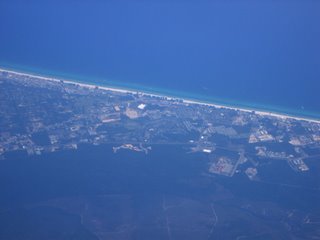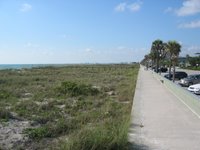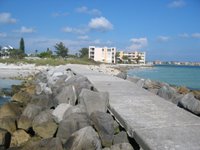
 Clearwater looked to me just like a Florida Beach should look like, with sunshine, crowds, colorful umbrellas, and lots of the large multi-story hurricane deflectors built in the dunes.
Clearwater looked to me just like a Florida Beach should look like, with sunshine, crowds, colorful umbrellas, and lots of the large multi-story hurricane deflectors built in the dunes.
 It's been thirty years since I've been in Florida, and now two trips in less than six weeks! Our time at the beach has been limited by our family's general abhorrence of hot, muggy weather, but we've managed some short excursions (for the rest of the story, go to hshipman blog).
It's been thirty years since I've been in Florida, and now two trips in less than six weeks! Our time at the beach has been limited by our family's general abhorrence of hot, muggy weather, but we've managed some short excursions (for the rest of the story, go to hshipman blog).
The flight from DFW to Tampa bypassed a large storm over New Orleans, so I didn't get good views of the coast until we got to Mobile - I was hoping for a good overview of post-Katrina Pass Christian and Biloxi. We flew a few miles north of the coastline from Mobile to Appalachicola area before cutting across the Gulf toward Tampa Bay. The photo may be Destin, though these resort beaches tend to all look the same from 35,000' (or maybe even from sea level?).
The hurricane deflectors (very small in this picture) remind me of lightning rods on the ridges of Pennsylvania barns or the wire spikes that keep seagulls off of waterfront restaurants and pigeons off of public monuments. They have been constructed up and down the southeast coast. Since hurricanes aren't very frequent, authorities let people live in them when they aren't actually being used to protect the nation from tropical storms.





